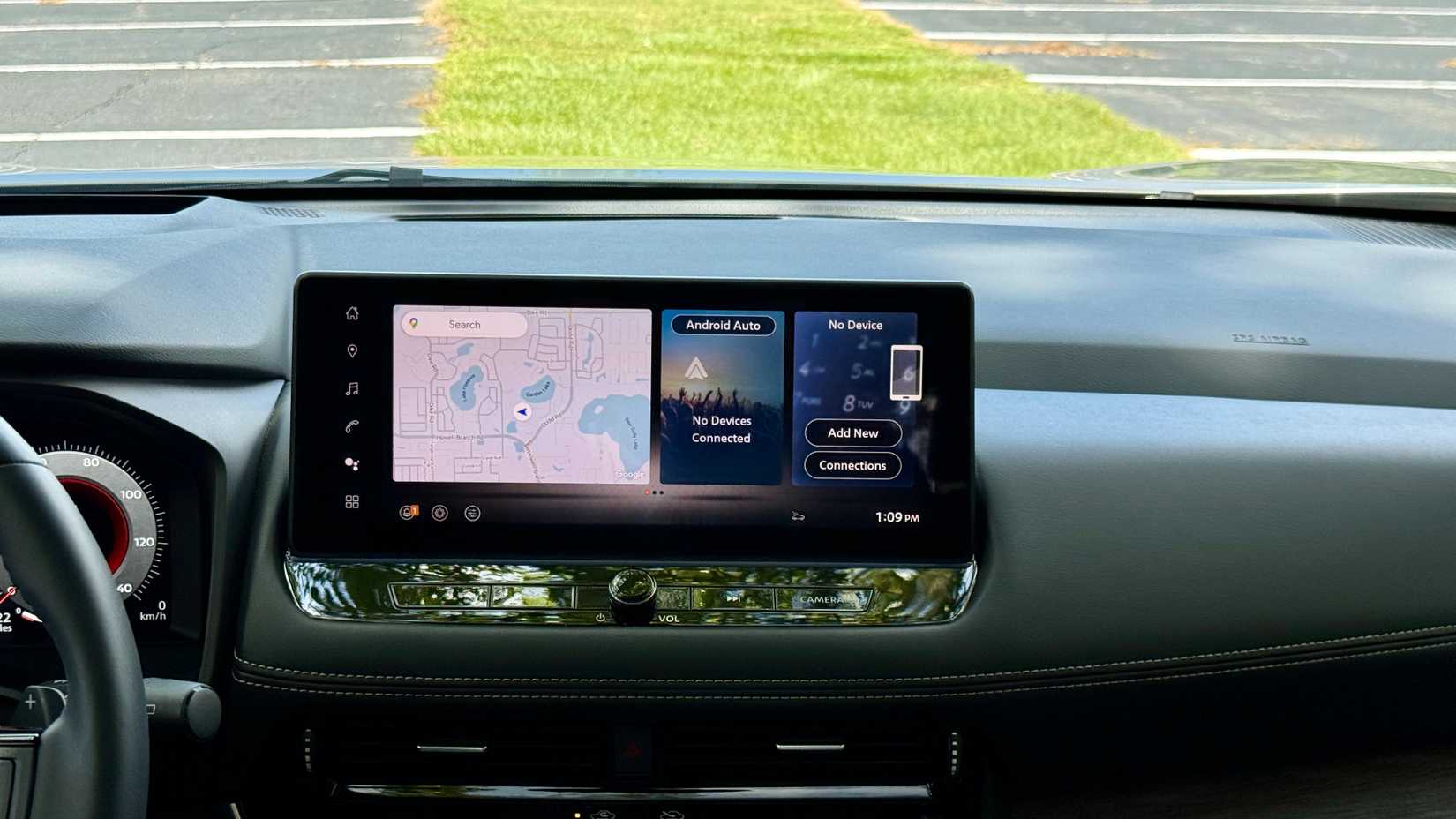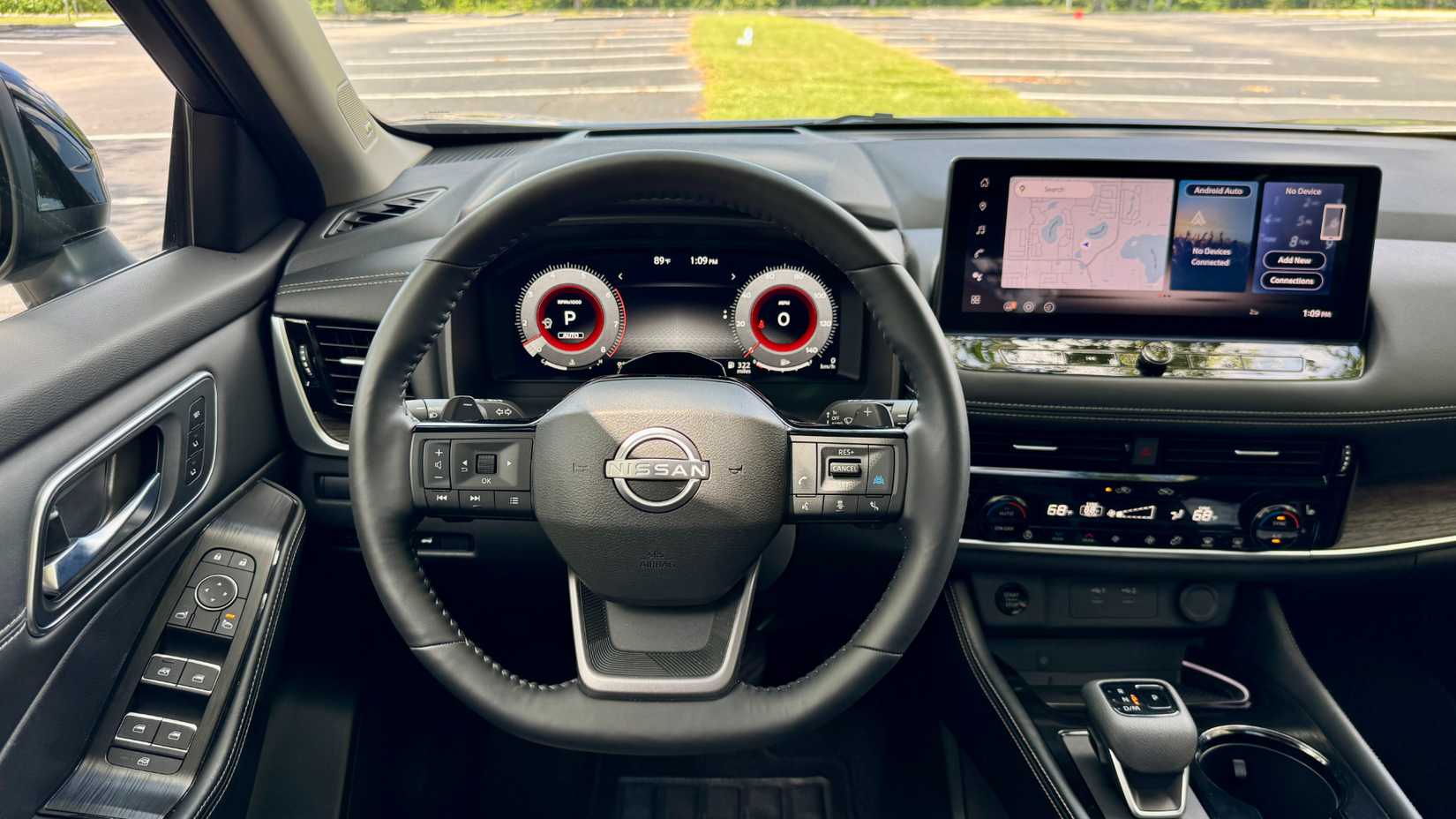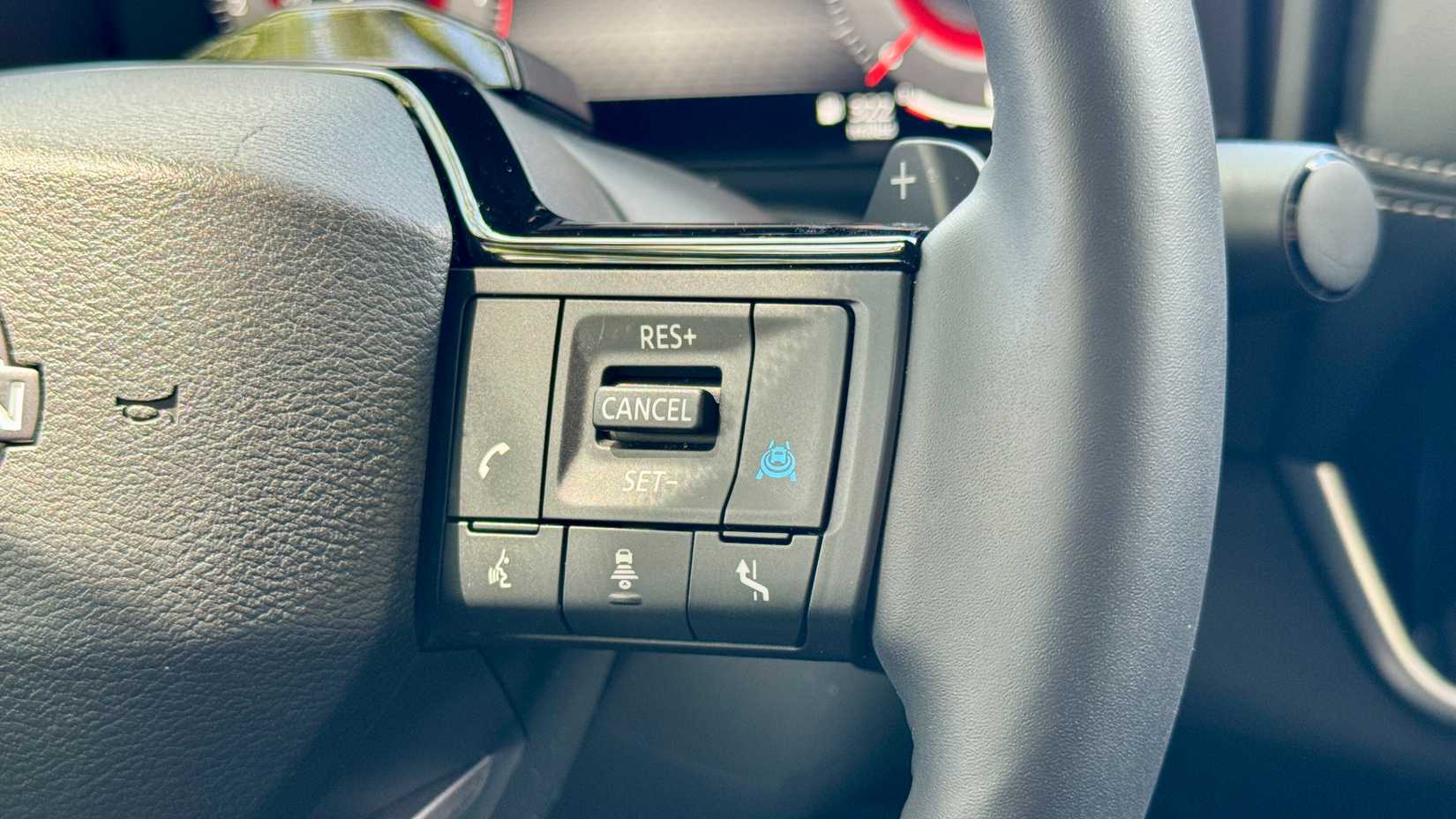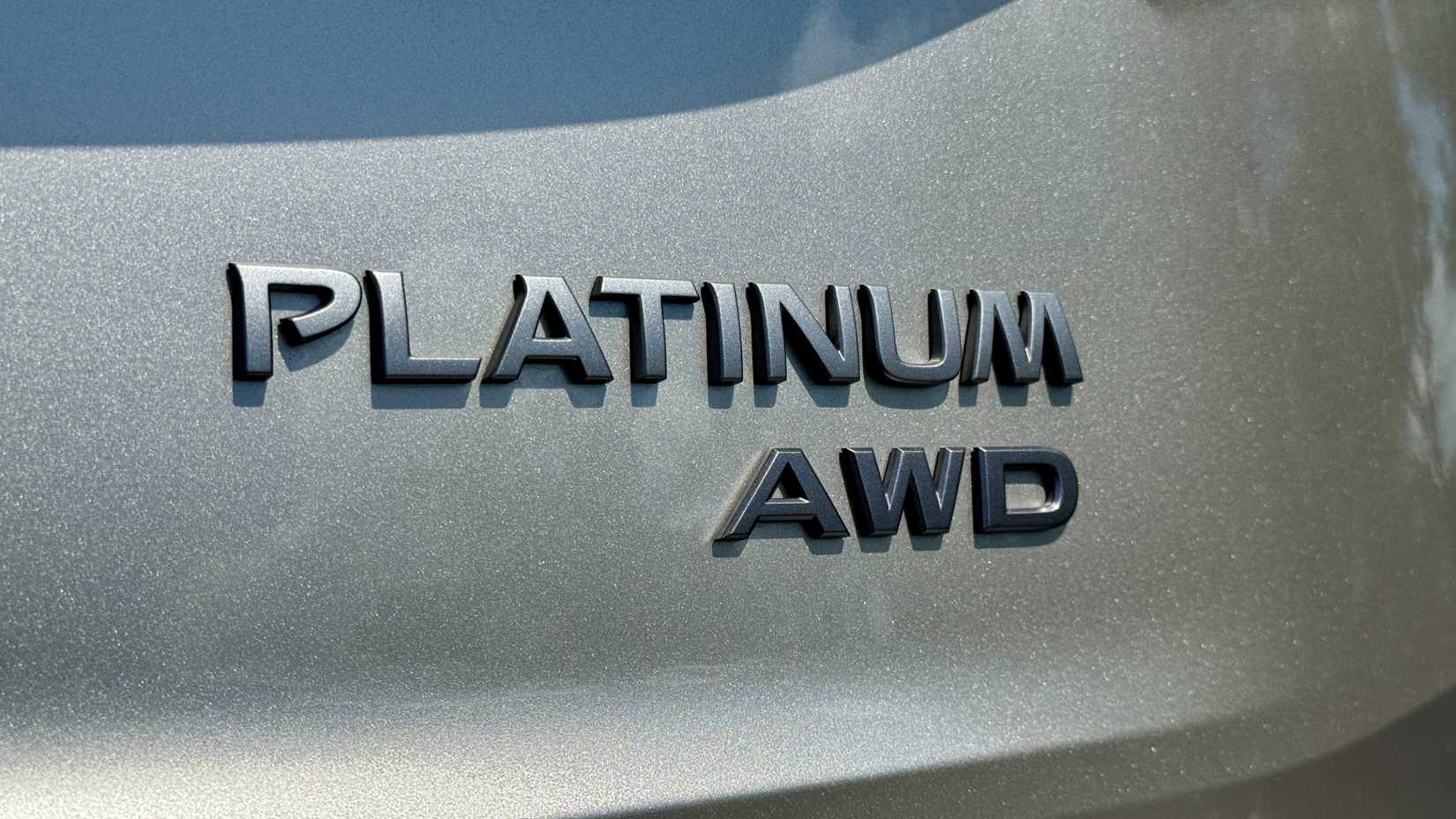Some vehicles are designed for speed, others for hauling people or gear. Then there’s the 2025 Nissan Rogue — a compact crossover that aims to do a little bit of everything. Competing in America’s most competitive automotive segment, it goes head-to-head with household names like the Honda CR-V and Toyota RAV4. And with 245,723 units sold in 2024, the Rogue clearly isn’t struggling to find fans. In fact, at one point, it even claimed the title of America’s best-selling non-truck, moving over 412,000 units (including the Rogue Sport).
But the question remains — does the Rogue’s popularity translate into greatness?
Now in its third generation, the Rogue has evolved steadily since debuting in 2021. Nissan dropped the old four-cylinder engine in 2022, replacing it with a more powerful turbocharged three-cylinder — a bold move that paid off in both performance and efficiency. A year later, the 2024 refresh introduced a larger infotainment display featuring built-in Google integration, along with refined styling and subtle cabin updates.
For 2025, Nissan doubles down on variety with the addition of a rugged Rock Creek Edition, while still standing out as the only compact crossover with a gasoline engine to offer hands-free driving. Pricing climbs slightly across the lineup for 2026, though the range-topping Platinum trim actually becomes more affordable — a welcome surprise for buyers seeking luxury without the premium price tag.
We spent time behind the wheel of the 2025 Nissan Rogue Platinum to see whether this well-equipped version of Nissan’s top-selling crossover truly delivers the comfort, tech, and value it promises.
Exterior Looks: Inoffensive Design
|
Strengths |
Weaknesses |
|---|---|
|
|
You can easily spot a 2024 or newer Nissan Rogue by its refreshed front end. The redesigned grille now features sleek horizontal crossbars on most trims, giving the crossover a more upscale and confident look. The standout, however, is the new Rock Creek Edition for 2025. It brings its own distinctive personality with a unique grille and bumper design, bold orange (officially “red”) accents, roof rails, black mirror caps, special badging, and rugged all-terrain tires.
One of the Rock Creek’s highlights is a fresh paint option called Baja Storm Metallic — a desert-inspired beige that perfectly matches its adventurous styling. Other trims come in four standard colors, including the elegant Champagne Silver Metallic seen on our test car. For those wanting a more striking look, Nissan also offers premium paint options for around $450, including two-tone combinations with a black roof — though these can cost up to $1,000 depending on the trim.
Every Rogue, even the base S model, rolls on aluminum wheels, adding a premium touch right out of the gate. The S trim wears 17-inch dark gray wheels, which look surprisingly sporty for an entry-level model. Moving up, the SV trim swaps those for 18-inch gray wheels with a silver lip, while the Rock Creek Edition trades size for toughness, running on 17-inch dark wheels with a red accent ring. Higher trims — the SL and Platinum — both step up to 19-inch alloys, though the Platinum’s unique wheel design adds a more refined, luxury-inspired flair.
Interior & On-Board Technology: Premium Enough?
|
Strengths |
Weaknesses |
|---|---|
|
|
Nissan has done a commendable job keeping the Rogue’s interior feeling modern and competitive, thanks in large part to its upgraded infotainment system. The interface is smoother, more intuitive, and seamlessly integrates Google built-in technology on higher trims — a welcome improvement for tech-focused drivers.
That said, this refresh feels more like a mid-cycle update than a complete overhaul, especially since an all-new Rogue is already in development for a 2027 debut. Still, the current model’s interior quality remains impressive for the segment, particularly on the SL and Platinum trims, where soft-touch materials and tasteful trim accents elevate the cabin experience.
There are, however, a few reminders that this is still an affordable compact crossover. Some lower-trim plastics and less-padded surfaces hint at cost-cutting, but overall, Nissan strikes a solid balance between value, comfort, and practicality — exactly what most buyers in this class are looking for.
2025 Nissan Rogue Interior Dimensions |
||
|---|---|---|
| Seating Capacity | 5 People | |
| 1st Row | 2nd Row | |
| Headroom (sunroof) | 39.2 inches | 37.8 inches |
| Headroom (no sunroof) | 41.1 inches | 39.2 inches |
| Legroom | 41.5 inches | 38.5 inches |
| Behind 1st Row | Behind 2nd Row | |
| Cargo Volume | 36.5 ft³ | 74.1 ft³ |
The 2025 Nissan Rogue offers a surprisingly broad range of interior options, allowing buyers to choose how premium they want their cabin to feel. Even the base Rogue S comes well-equipped with Charcoal cloth seats and a urethane steering wheel, providing a simple yet durable setup for everyday use.
Stepping up to the SV trim brings a noticeable improvement in comfort, featuring premium cloth upholstery in Charcoal or Light Gray and a leatherette-wrapped steering wheel. For those who want more upscale touches, the $2,000 SV Premium Package adds Prima-Tex leatherette seats, roof rails, a panoramic moonroof, rear sunshades, heated front seats, and a heated steering wheel, making the SV feel nearly as plush as the upper trims.
The Rock Creek Edition adds a rugged edge while maintaining comfort. It comes with standard heated leatherette seats, accented with unique stitching, and offers an $800 Premium Package that includes a motion-activated liftgate, auto-dimming rearview mirror, ambient interior lighting, a four-way power driver’s seat, heated steering wheel, and a wireless charger — practical additions for adventurous drivers.
Moving into luxury territory, the Rogue SL introduces real leather seating surfaces in Charcoal or Light Gray, along with a fully digital gauge cluster. The $1,740 SL Premium Package enhances convenience with a motion liftgate, panoramic moonroof, tri-zone climate control, rear sunshades, tilt-down mirrors, driver’s seat and mirror memory, and a head-up display. Tech enthusiasts can also add the $3,200 Tech Package, which includes hands-free ProPilot Assist 2.1, rain-sensing wipers, and a 360-degree surround-view camera system.
At the top of the range, the Platinum trim delivers a truly premium experience. It comes standard with quilted semi-aniline leather seats in Charcoal or Chestnut, Bose premium audio, and memory settings for the driver’s seat and mirrors. Even so, there’s room to add more: a $990 Platinum Premium Package adds heated rear seats, tri-zone climate control, rear sunshades, and a head-up display, while the Tech Package from the SL remains optional for the most advanced driver-assist features.
Infotainment: Google Is Here, Mostly
Technology has always been a key selling point for the Nissan Rogue, and the latest model keeps things fresh with a modern, user-friendly setup. Every Rogue now includes an eight-inch NissanConnect touchscreen with Apple CarPlay and Android Auto compatibility, ensuring seamless smartphone integration right from the base S trim. The entry-level model also comes with a four-speaker audio system, which is adequate for casual listening but fairly basic for the segment.
Moving up to the SV, Rock Creek, or SL trims brings a six-speaker setup for richer sound and a more immersive in-cabin experience. However, it’s the upper trims that truly elevate the Rogue’s tech appeal. Both the SL and Platinum models feature a larger 12.3-inch touchscreen with built-in Google technology — including Google Maps, Google Assistant, and Google Play integration — plus Amazon Alexa support for added convenience.
The larger display also unlocks wireless Apple CarPlay and Android Auto, reducing clutter from charging cables, and pairs seamlessly with a matching 12.3-inch digital gauge cluster that replaces traditional dials with crisp, customizable graphics. For audiophiles, the Platinum trim adds an exclusive 10-speaker Bose Premium Audio system with a subwoofer, delivering deep, clear sound throughout the cabin.
Performance: Three Is More Than Four?
|
Strengths |
Weaknesses |
|---|---|
|
|
Under the hood, every Nissan Rogue now features the same 1.5-liter turbocharged three-cylinder engine equipped with Nissan’s innovative variable compression (VC) technology. Despite its compact size, this engine delivers an impressive 201 horsepower and 225 lb-ft of torque — a notable improvement over the previous generation’s 2.5-liter four-cylinder, which produced just 181 hp and 181 lb-ft.
The VC technology allows the engine to adjust its compression ratio on the fly, optimizing power or efficiency as needed. Power is routed through Nissan’s Xtronic continuously variable transmission (CVT), which helps keep the small turbo engine in its sweet spot for smooth acceleration. Front-wheel drive remains standard, while all-wheel drive is available across the lineup for those seeking extra traction in poor weather or light off-road conditions.
Performance Impressions
Despite the endless criticism often thrown at it online, Nissan’s CVT proves to be a surprisingly pleasant transmission in real-world use. In normal driving, it keeps engine revs low, avoiding the dreaded “CVT drone” that internet commenters love to complain about. The system also simulates gear shifts, which helps it feel more like a traditional automatic to most drivers.
The 1.5-liter three-cylinder engine is impressively quiet, even under heavy acceleration, adding to the Rogue’s refined character. In our Platinum AWD test vehicle, we recorded a 0–60 mph time of 8.41 seconds—not exactly quick, but perfectly adequate for a compact crossover. Overall, the drivetrain feels smooth, composed, and well-suited for everyday driving duties.
Ride and Handling
While it’s far from agile, the Rogue handles itself confidently through corners. Engaging Sport mode adds a touch of weight to the steering, giving it slightly more responsiveness without compromising comfort. The ride itself is impressively cushy, soaking up bumps with ease thanks to its independent front and rear suspension. The Rock Creek trim benefits from a specially tuned off-road suspension, though we didn’t have the opportunity to test it firsthand.
On the highway, the Rogue impresses with its quiet cabin, outshining many rivals in terms of noise isolation — a trait that makes it an excellent long-distance cruiser.
Our test vehicle was equipped with ProPilot Assist 2.1, included in the optional Technology Package, allowing us to sample Nissan’s latest hands-free driving system. In past experiences, the software struggled to remain active for long stretches, but this time it performed far better. During our drive from Orlando to South Florida on I-95, the system disengaged only a few times due to “HD map maintenance.” When active, it kept the Rogue perfectly centered in its lane, and we appreciated how the head-up display highlighted vehicles entering our blind spots — a thoughtful and confidence-inspiring feature.
Lane changes in the Rogue can be initiated in two ways: by using the turn signal stalk or by pressing the passing button on the steering wheel, which nudges the car one lane to the left. However, unlike GM’s Super Cruise or Ford’s BlueCruise, Nissan’s ProPilot Assist 2.1 still requires the driver to keep their hands on the wheel when performing automatic lane changes.
This limitation highlights that Nissan’s system isn’t quite as advanced as its top competitors. That said, we didn’t find it frustrating — if anything, the extra caution feels intentional. It prevents the Rogue from darting across lanes too frequently or unexpectedly, keeping the driver more engaged and maintaining a comfortable balance between automation and control.
Fuel Economy Info
Fuel economy for the 2025 Nissan Rogue varies only slightly depending on the trim level and whether you choose front-wheel drive (FWD) or all-wheel drive (AWD). Thanks to the small but efficient 1.5-liter turbocharged three-cylinder engine, the Rogue delivers solid mileage for a compact crossover. Below is a breakdown of the EPA-estimated miles per gallon (MPG) ratings for each configuration:
| 2025 Nissan Rogue Fuel Economy | |||
|---|---|---|---|
| Trims | City | Highway | Combined |
| S/SV (FWD) | 30 mpg | 37 mpg | 33 mpg |
| S/SV (AWD) | 28 mpg | 35 mpg | 31 mpg |
| SL/Platinum (FWD) | 29 mpg | 36 mpg | 32 mpg |
| SL/Platinum (AWD) | 28 mpg | 34 mpg | 31 mpg |
| Rock Creek | 27 mpg | 32 mpg | 29 mpg |
Among non-hybrid compact crossovers, the Nissan Rogue stands out as the best in its class for fuel economy. While there are several hybrid competitors capable of achieving over 40 mpg, those models typically come with a higher price tag. This makes the Rogue an especially impressive value, delivering excellent efficiency without the added complexity or cost of a hybrid system.
Verdict & Pricing: Be Careful With The Options
Starting at $28,590 for the base S trim with front-wheel drive, the 2025 Nissan Rogue remains one of the few compact crossovers still priced under the $30,000 mark. However, adding all-wheel drive for $1,400 quickly pushes it past that threshold—and costs can climb significantly from there.
The SV is a smart upgrade at $29,590, offering more features for a modest price increase. For those who prefer a rugged look, the Rock Creek Edition brings distinctive styling cues and off-road appeal starting at $33,490. Our pick would likely be the SL trim, priced from $35,090, which strikes an excellent balance between comfort and value while unlocking access to the optional Tech Package for hands-free driving.
At the top of the lineup, the Platinum model certainly delivers with quilted leather upholstery and upscale amenities, but it gets pricey fast. Our fully loaded AWD Platinum tester added the Platinum Premium Package ($990), Technology Package ($3,200), two-tone paint ($350), floor mats ($450), illuminated kickplates ($405), interior accent lighting ($350), and ground lighting ($625)—bringing the total to $48,680, including a $1,390 destination charge.
This is easily the nicest Rogue we’ve ever driven, and it remains the only gas-powered compact crossover to offer hands-free driving—a feature typically reserved for EVs like the Chevrolet Equinox EV with Super Cruise. Still, at nearly $50,000, this top-spec version costs more than we’d be comfortable spending on a mainstream compact crossover.
For 2026, Nissan has made only slight pricing adjustments, with a $200 increase across most trims but a $1,000 reduction for the Platinum. A new Dark Armor trim is also on the way, though pricing details haven’t yet been announced.
Overall, the Rogue is better than ever, but to keep it recommendable, it’s best to avoid overloading the Platinum trim with options. The SV and Rock Creek models hit the sweet spot for value, offering the right blend of comfort, features, and pricing.
Finally, it’s worth noting that a next-generation Rogue is already on the horizon. If you can wait, the upcoming model will likely bring new technology and improvements. On the flip side, the current versions may soon see attractive discounts, making them a solid deal. If it were our money, we’d wait.




